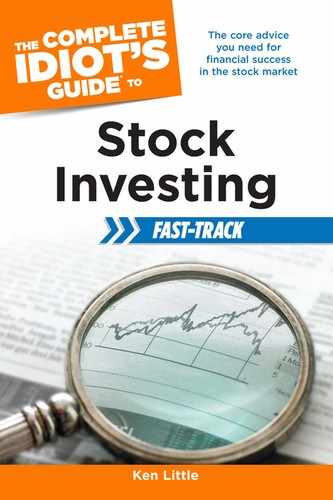Successful investors have a plan to sell each stock they own. This plan covers market circumstances such as a significant drop or rise in the stock’s price. It also details when you might want to sell for more personal reasons. Either way, the sell plan is in place so if circumstances change rapidly, you don’t have to make an uninformed decision. This is not a long document, but rather a series of short statements, something like: “If the stock drops X percent, I will (sell or add to my holdings).” “If the stock rises to $X, I will sell Y number of shares or all shares.” You get the idea and know what fits your personal financial situations. Here are some reasons for selling you may want to include in your plan:
Risk tolerance reached. You bought a company that looked like a steady, growing concern, but instead the stock has turned out to be a rollercoaster ride. For whatever reason, this stock is just too volatile for your nerves. Dump this firecracker and replace it with a stock that will let you sleep at night.
You need cash. An unexpected major bill can sabotage anyone’s budget. Using a stock, especially one that is underperforming, to solve a financial emergency is another reason to sell. However, take a close look at your personal finances. An emergency cash fund that is not tied up in investments is recommended to avoid, except in extreme cases, liquidating stocks to pay bills.
Moral, ethical conflicts. More and more investors are becoming concerned about the social, environmental, ethical, and moral standards of the companies they own. You may decide that a company you own has practices or products that conflict with your social, religious, or moral beliefs. There is no better reason to sell if that is important to you.
The grass is greener. There is nothing wrong with dumping an underwhelming stock for a company that offers better returns. Long-term investors should avoid dumping carefully researched stock because the price has slumped. If the company still passes your buy case, look (and think) before you leap. The attractive stock you don’t own may be a flash on the market, only to fall hard.
| MARKET RISK |
You’ve reached your goal. It worked. Your plan to reach that financial goal, whether it is retirement or getting a child to college, is finally here. Now is the time to start systematically liquidating those stocks you’ve tagged for this goal.
The stock drops by X percent. Your sell plan should address this situation. You have several basic choices. You can sell all the stock you own and move on to another stock. You can sell part of the stock you own, which is a tactic to take some money out of the stock, but hold on to some shares in case they rebound.
The company flounders. This is your signal to sell. You bought the company because of its fundamentals and its business plan. When something changes and the company loses its way, you re-examine whether it is the same company or not. The company may find itself out of step with its industry and loses its leadership position.
When a stock is overvalued. Can there be too much of a good thing? There certainly can in the market. When stocks are pushed way past their true value, they are often set up for a fall. Selling an overvalued stock is certainly preferable to buying an overvalued stock. Just be prepared to watch it keep going up after you sell, as happens sometimes. Don’t second-guess yourself; it could have more easily gone the other way.
Rebalancing your portfolio. You have decided that the best allocation for your circumstances is 60 percent stocks, 30 percent bonds, and 10 percent cash in your portfolio. Good fortune has smiled on you and your stocks, which are now valued at 75 percent of your portfolio. As tempting as it might be to stay there, your best move is to rebalance your portfolio by selling off some of your stocks and bringing the percentages back into alignment.
